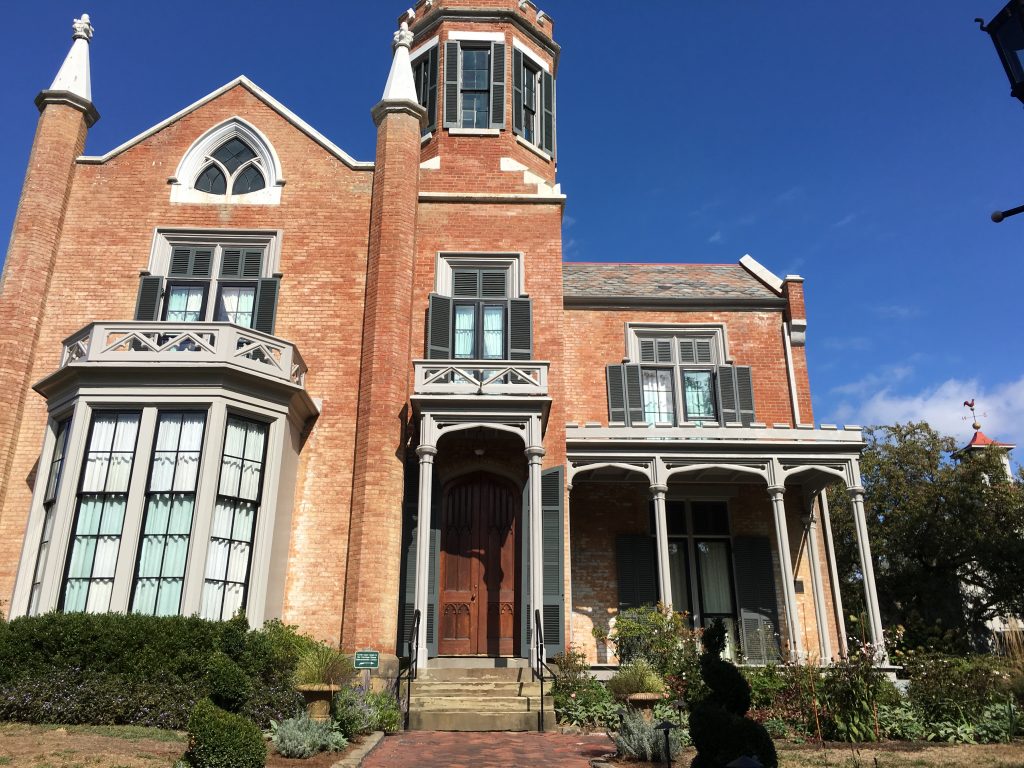
Built in 1855 near the Ohio River, The Castle is a beautiful example of Gothic Revival architecture and was home to “some of the most prominent and influential citizens” of Marietta. Gothic Revival architecture was very popular between 1830 to 1860. Some of the home’s features include pointed arches, parapets, the octagonal tower, trefoil attic window and stone capped spires.
I began my tour at the renovated carriage house and strolled through the exhibit and watched a video about the home and the families that had once resided here.
Prior to the Castle’s inception, Nathaniel Clark, a local potter, lived on this land in 1833. During this time, German immigrants were moving to this area. Making milk pans, jugs and jars, there was an orchard above his house where picnics were popular. His house appeared on the 1845 Emerson map of Marietta. Clark moved to Pittsburgh in 1852.
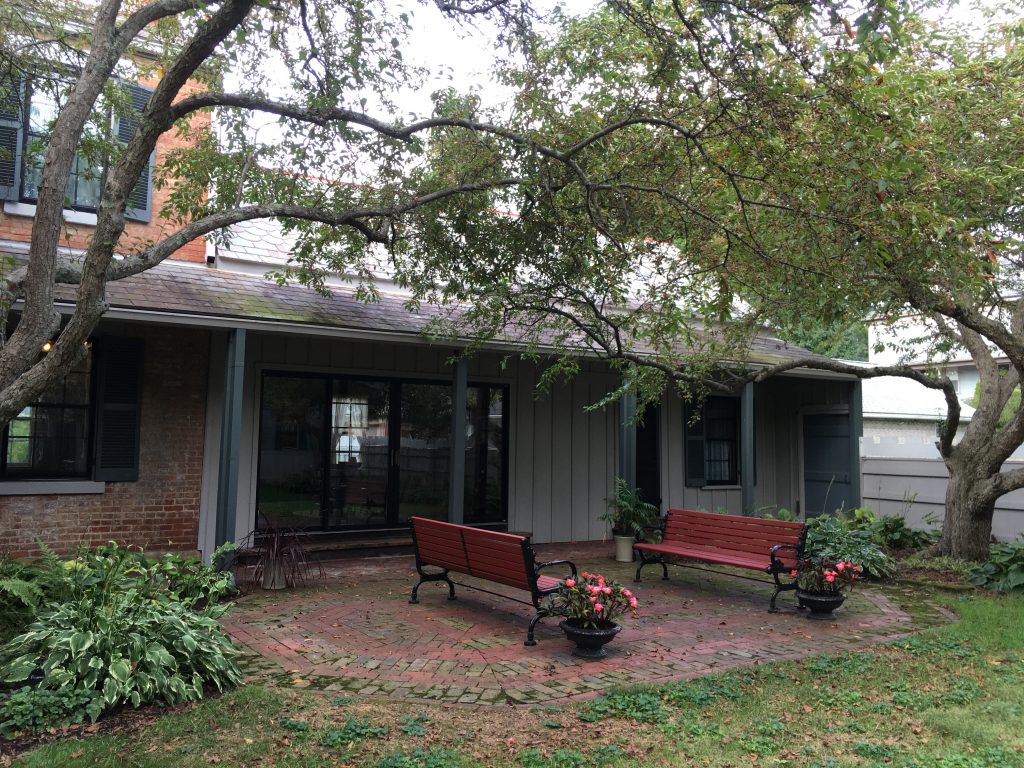
The home was built by Melvin Clark, a local prominent attorney, who had purchased the hillside land for $2000. A staunch abolitionist, Clark was appointed Marietta’s first city solicitor in 1854 and represented the third ward to address gas lighting for the city in 1856. When Melvin died during the Civil War at Antietam, the property was sold to John Newton in 1858. Melvin’s family plat can be found at the Mound Cemetery in Marietta.
John Newton was an excellent businessman owning the Marietta Bucket Factory. He was known for holding grand parties, entertaining his business colleagues until his sudden death on July 17, 1886.
Edward Nye bought the Castle in 1887 for $7000. Born in Marietta in 1812, he was the son of the original shareholders of the Ohio Company. He was the publisher of the Marietta Gazette from 1833 to 1837. Dying unexpectedly in 1888, Nye left the Castle to his only daughter, Lucy Nye Davis. During Lucy’s residence at The Castle, her daughter, Jessie, was married here in 1896. Jessie eventually took ownership of The Castle at the age of 55 and lived here until five days before her 100th birthday in 1974.
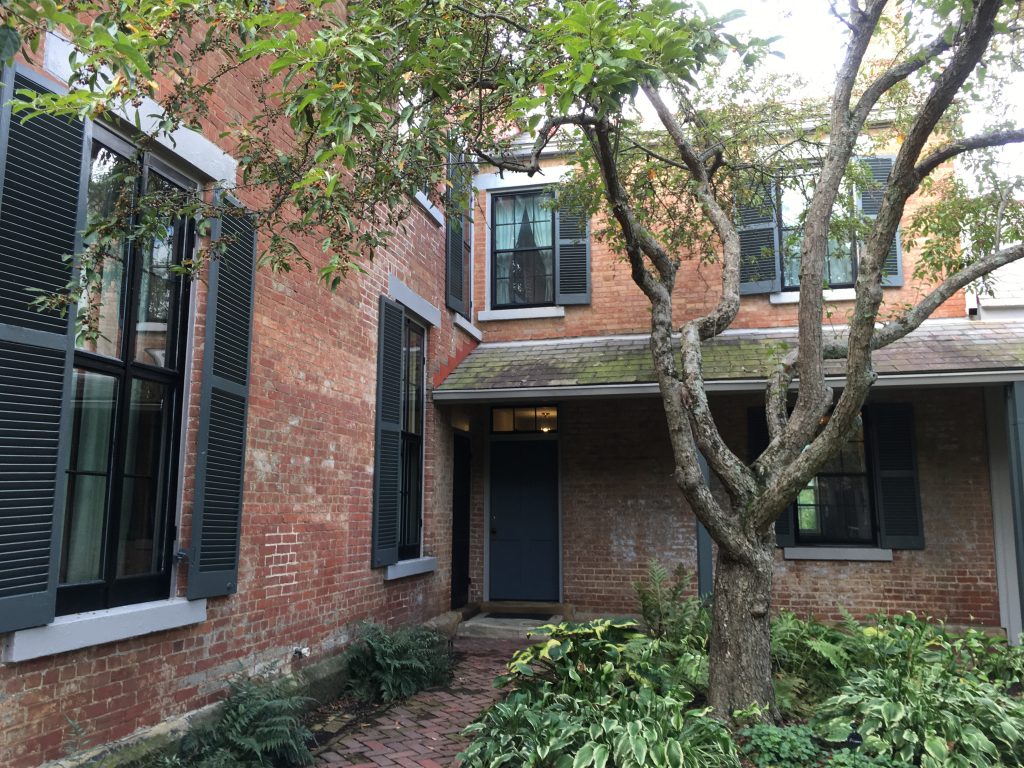
After Jessie’s death, the home was purchased at auction for $42,500, by Stewart Bosley and his sister Dr. Bertlyn Bosley who took nearly twenty years to renovate this historical home. Upon the deaths of Stewart and Bertlyn, the property was deeded to Betsey Mills Corporation, reopened to the public in 1994 and was added to the National Register of Historic Places. In 1999, the Castle was opened as a museum.
During my tour, I was instructed that photographs on the inside were prohibited but that I was able to photograph the exterior of the house and the Potter’s area.
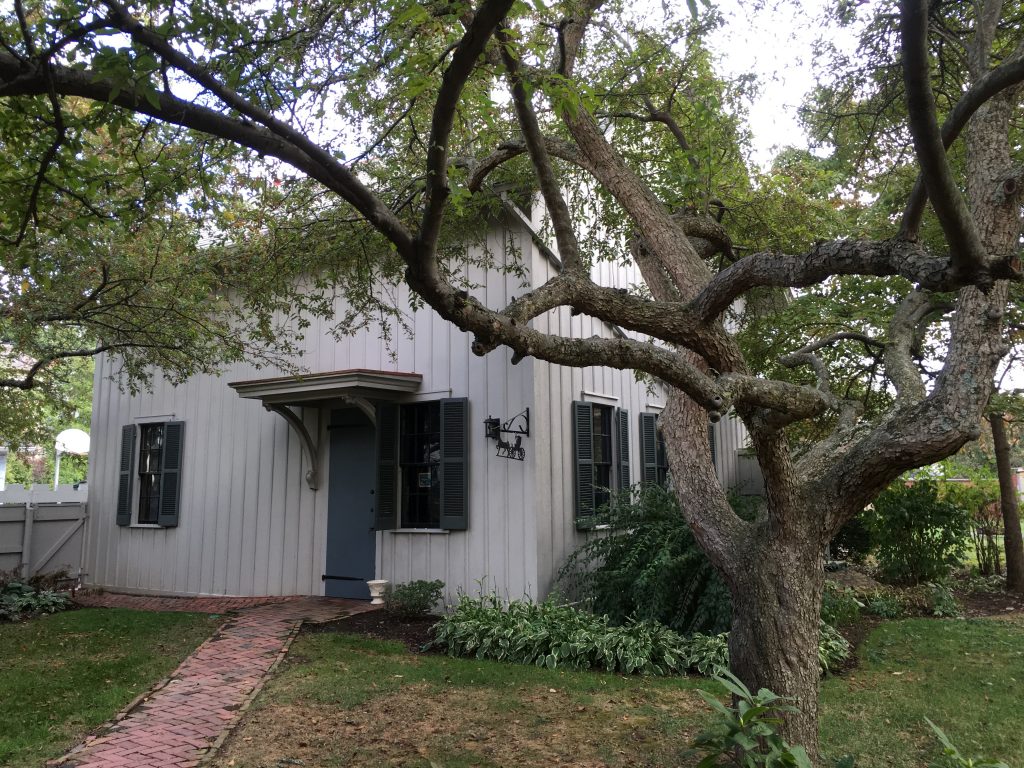
The Potter’s house was built in the 1830s before the Civil War, as well as most of the fencing. Originally painted grey, the renovators had to remove the paint by hand. While the doors are original, the screens were added in 1922. The oak used to build the house was replaced with poplar and the pine floors are original . Additional features include the Gothic arches, wallpaper which looks like leather and wainscot, which was added during the 1890 refurbishment.
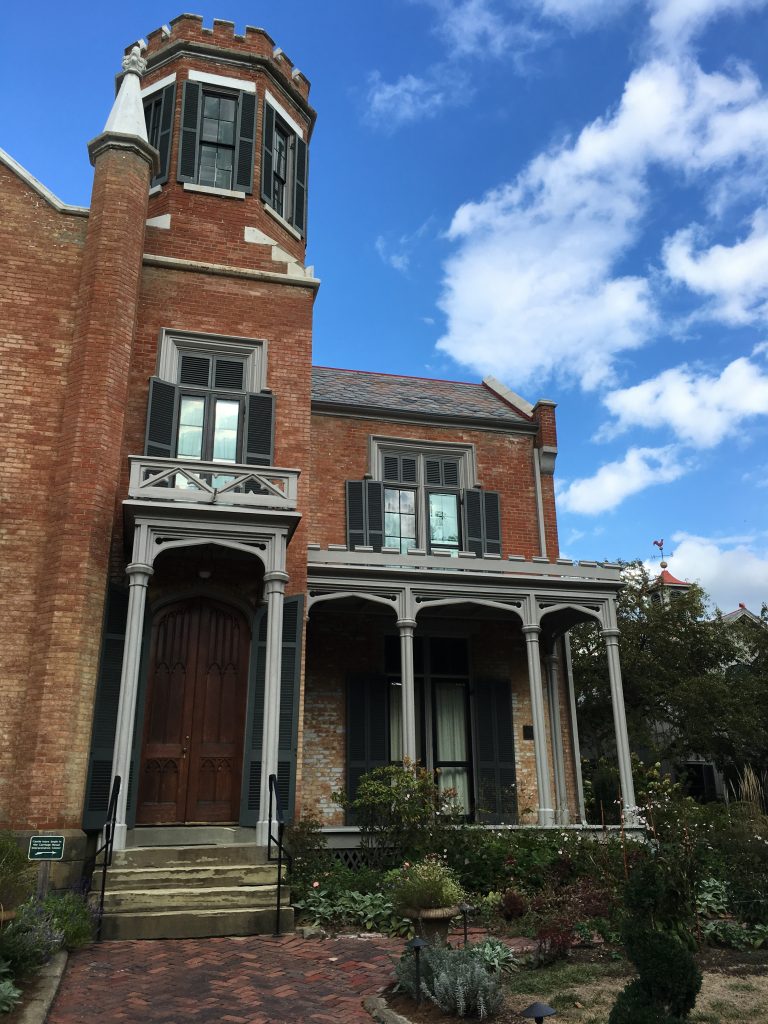
During the refurbishment, there were letters and calling cards found behind the baseboards, dishes that had been Jessies, and a 1740 grandfather clock. The bricks were made from the Sicler’s brick factory while the Stevens Piano was made locally at a factory in Marietta. An 1875 lithograph of the property was discovered as well as a weather vane found by Stuart.
In the Sitting Parlor, they noticed that there was pine wood under the rugs. The parquet floor by the fireplace was installed in the 1890’s. In the library was an 1840’s empire desk, and Grace’s piano, book cases built by captain William Holden and a portable campaign desk used by officers. It was said that Jessie’s favorite room was the library. The glass throughout the has had been designed and installed by a glass factory by the Ohio River, but it was destroyed by a fire.
Upstairs, the doors are poplar but the flooring is pine. The brick has been exposed and the fireplace is where the toilet was. The bedroom was said to have an efficiency kitchen. Several signatures were exposed when the wallpaper was removed. There is Jessie Bowen’s signature dated 1922; Rufus Dawes and William Kelter, signed in 1890.
Within the master bedroom are modern hardwood flooring, Jessie’s bed, a breakaway wardrobe (so it could easily be moved), stained glass, a portrait of the daughter of Marietta’s first mayor.
Bertrand’s room had no fireplace because they added a little closet. It was said that she had Parkinson’s. Lillian was Bosely’s mother and in her room was found a feminine desk, 1912 dress and fans from the 1800s.
The dining room was Norwegian rose, there were flues on the marble floor and the silverware was from Jessie’s family. Two full sets of China had belonged to Bertland while the silver and buffet table belonged to Nye’s grandparents. The chandelier is not the original as it was built for gas, had a dragon tale and 400 crystals.
In the formal parlor was a marble fireplace from Cincinnati, dark/block wood made with inlays, candelabras, a chandelier that Davis had installed, a Steinway Grand Piano which was a gift to Bertland for his 10th birthday and a bathroom and elevator were added later. In this parlor wedding lectures and small events were held here. Grace’s marriage took place here as well.
In the 1940s, the kitchen was equipped with a tin ceiling, a home leader stove made from Marietta, cabbage lights and additional kitchen updates.
The Potter’s house was the final stop on our tour. Inside, there was pottery that had been discovered that had been created by Nathanial Clark. My favorite part of the house was the beautiful brick fireplace and mantel. Plexiglass protects the original structure of the fireplace. In addition there are paintings dating back to the 1940s, an 1888 map of Washington County and a third bedroom with a tub and outhouse.
Spending time at The Castle in Marietta was such a great experience and was greatly appreciative of the tours given by Phyllis and Judy. Learning so much about the local history, I was even more excited to continue my exploration of Marietta. Next stop, the Mound Cemetery.
Have you visited The Castle in Marietta? What were your thoughts of this historical home? I would love to hear about it if you would kindly leave a message in the comments section below. Many thanks for reading about my tour of The Castle and wishing you many Happy Travels!
What to See and What to Do:
The Castle
418 4th Street
Marietta, OH 45750
Telephone: +740 373 4180
- Admission Fee: $10 Adults; $7 Kids (age 13 and under); Ages 5 and under free. Exclusive tours can be purchased for a discounted rate of $65 by calling 740-373-4180
- Hours: The Castle is open April, May & September through December, Monday, Thursday and Friday from 10AM to 4PM and Saturday and Sunday from 1 to 4PM. June through August the hours are Monday, Tuesday, Thursday, Friday and Saturday from 10AM to 4PM; January through March the Castle is open for group tors, school tours and programs and scheduled events. Closed New Year’s Day, Easter, Thanksgiving and Christmas
- Length of Visit: 1 – 2 hours
- Tips for Your Visit: Photos are not permitted inside of the house.
Where to Stay:
The Hackett Hotel
203 1/2 2nd Street
Marietta, OH 45750
Telephone: +740 374 8278
Where to Eat:
Boathouse BBQ
218 Virginia Street
Marietta, OH 45750
Telephone: +740 373 3006
You have to try the Pulled Pork Mac & Cheese! Amazing!
What to Read:
A Guide to Historic Marietta Ohio, by Lynne Sturtevant